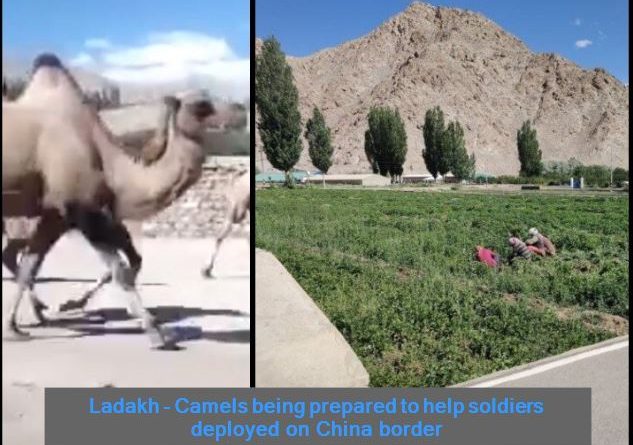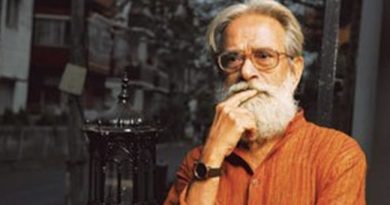Ladakh – Camels being prepared to help soldiers deployed on China border, seabuckthron juice to be given to save them from fatigue
A large part of Ladakh is cold desert. Due to this, here vegetables or fruits or very difficult are available. But due to the far-reaching and very high elevation of the country, this area remains cut off from the rest of the country for several months.
Leh: The old saying of the army is that in order to go to the battlefield, soldiers have to go on their stomach i.e. ‘Army Marches on Stomec’. If the soldier’s stomach is empty then he will not be able to fight the war. This is the reason that the DRDO lab at Leh is not only providing fresh food to the soldiers, but also for patrolling the high altitude in East Ladakh, from arms and rations to the troops stationed along the China border in Ladakh. Pony and Camel are preparing for delivery.
The team of ABP News itself arrived here and learned how the Defense Institute of High Altitude Research (DIHAR or DIHAR) in Leh has been serving the army since the 1962 war.
DIHAR helps the army in two ways. The first is to provide fresh seafood, fruits, meat with special seabuckthron-juice to the troops stationed on the China border in far-flung areas of eastern Ladakh, which keeps the soldiers fresh and not tired. Apart from this, they also get vitamins and anti-oxidants.
Actually, a large part of Ladakh is cold desert. Due to this, here vegetables or fruits or very difficult are available. But due to the far-reaching and very high elevation of the country, this area remains cut off from the rest of the country for several months. In such a situation whether it was China border or Kargil, Dras or Siachen area adjacent to Pakistan, providing fresh food to the soldiers there was a big challenge. Even fruits and vegetables that grow easily in the plains do not grow here.
According to DIHAR Director, Dr. OP Chaurasia, the objective of setting up this lab here was to prepare the vegetables and fruits which can be grown by the local people and farmers towards the climate of Leh-Ladakh. DIHAR has now prepared 101 varieties of vegetables here. Of these, one cabbage is up to 14 kg and pumpkin is up to 50 kg. According to Dr. Dorje, a scientist posted here, the DIAAR lab provides this technology and seeds of these vegetables to local farmers and cooperative societies. Then the farmer mass-scale means that in a large area, these vegetables and fruits etc. are transported to the army unit so that the soldiers get fresh vegetables etc.
Apart from vegetables and fruits, the DRDO, Leh’s lab of Defense Research and Development Organization, the country’s most prestigious defense institute, did a long research on a wild tree found in Ladakh and the wild fruit that grows on it. Amla is a great source of anti-oxidant, but in its fruit, amla is found ten times as much as vitamin-C. It is also known by the name of Cyberthron or Leh-Berry.
According to Dr. T. Schtobden, a scientist who has been long-term research on seabuckthron, drinking juice of this fruit does not cause the soldiers to have stress and fatigue in high mountain areas, which occur during deployment to high altitude. DIHAR is also contacting private companies to increase the supply of juice so that these juices can reach the soldiers more and more. Some time ago the DRDO had also tied up with Ramdev’s Patanjali company, but it could not be more successful. The Horticulture Department of Leh administration also prepares its juice.
[amazon box=”B07SDFC9QT” “small”]
In addition to the soldiers’ food, the DIHAR lab also works on animals to prepare these local animals for patrolling the army in remote and high-altitude areas. During the Kargil war, Janskar-Pony had helped immensely in transporting the army from ration to arms in the Kargil and Dras sectors. With the help of the Army’s RCV ie Remount and Veterinary Corps, this lab prepared Janskar-Pony (these special types of ponies are found in Ladakh’s Janskar Valley ie Valley).
Swati Singh, a scientist posted at the Animal Research Unit of DIHAR, told ABP News that work is now underway on the double-hump camel, i.e., camels found in Ladak’s Nubra Valley, so that these camels along the eastern Ladakh border with China Be deployed with army units. These camels are being trained to carry military goods here.
Let us tell you that East Ladakh is the area where the Indian Army is going on a confrontation with the Chinese Army in Galvan Valley, Gogra, Hot-Spring and Depsang Plains. There are no roads in these areas with an altitude of about 14-15 thousand feet and by tracking the LAC ie Line of Actuar Control can be reached.
In ancient times, traders used to carry their goods on these double-hump camels on the silk route from China and Tibet through Ladakh to Central Asia. This is the reason why DIHAR wants to use these camels for the Indian Army. Sources said that some camels have also been deployed along with the army on the China border these days. According to Dr. Swati, because the double hump camel in Ladakh is very few, the camels found in Rajasthan have also been brought to the lab here so that they too can be trained and sent to the China border to help the soldiers.




